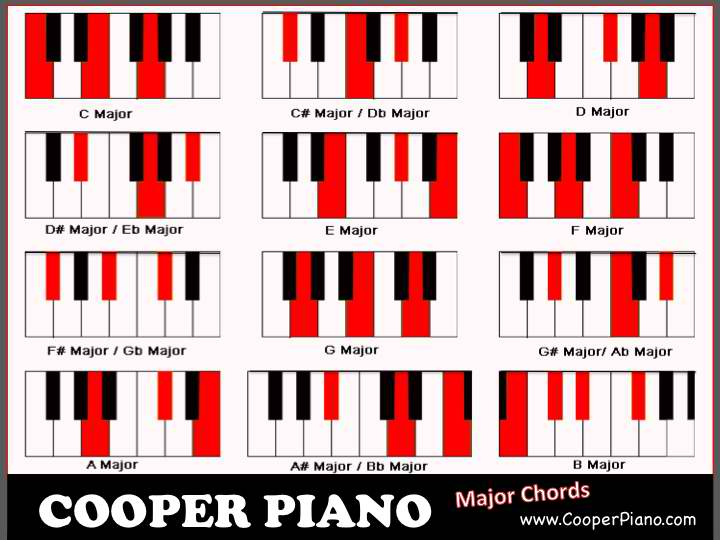It’s been my experience that many people who are interested in playing the piano are 
The Basic Keys
When learning to play piano, it is essential to become familiar with the keys because this will lay the foundation needed to master complicated pieces. A typical keyboard has 88 keys and the middle one is called the middle or center “C”. This key effectively divides the piano in half; one portion for the left hand and the other for the right.
Major and Minor Chords
It is important to get familiar with major and minor chords when learning to play piano. Chords are the harmonious blending of three or more notes that the listener hears as if they are all being played at the same time. A major chord is a made up of three basic elements a root, a major third, and a perfect fifth. The bottom note, or root, is 4 half steps away from the major third. The perfect fifth is 3 half steps from the major third. Minor chords are composed of a root, minor third and a perfect fifth.
Chord Inversions and Extensions
Chord inversions and extensions are utilized as a way to add an extra element to a chord. Inversions connect two chords so that the transition between them is seamless, but only two inversions can be made for each three note chord. To do an inversion, whether major or minor, simply change the root note.
Adding an extension simply means that an extra interval is added to a chord. This is represented by a letter followed by a small number. The number indicates the number of half steps that the extension is away from the root of the chord.
Learn a Simple Contrary Motion Scale in C Major
Scales are a set of twelve musical notes played in order by by either ascending or descending pitch. Practicing them is a surefire way to gain good habits from the very beginning. Scales help with the memorization of the keys and with learning how to play by ear. Placing letter stickers on the keys are also an excellent way to memorize them. Below is a chart for the major chords. Click on chart to see file size image.
All notes are separated by intervals which details the distance between them. Any key that is next to another key is considered to be a halftone or a half step. This is the smallest interval. A whole step is made up of two half steps. This means that a whole step is any two keys with a note in between them.
Picking the Song
It is important to have fun whilst learning to play piano because this will keep things interesting. A simple way to do so is to pick a song that is designed for a beginners in order to avoid the frustration that may be generated from picking a more complex piece.
Section the Song
Instead of learning an entire song, it is easier to break the piece down into sections and complete one at a time. Once a section has been learned, move on to the next part and start the process again. Before long, the entire song will be mastered.
Practice Makes Perfect
Practice make perfect and the piano is no exception. Setting aside short 15-30 minute daily sessions will maximize creative potentiality and fluidity of motion.
Learning to play piano doesn’t have to be a chore, utilizing informative tips will go a long way in gaining a learning curve and avoiding frustration with this beautiful instrument.







